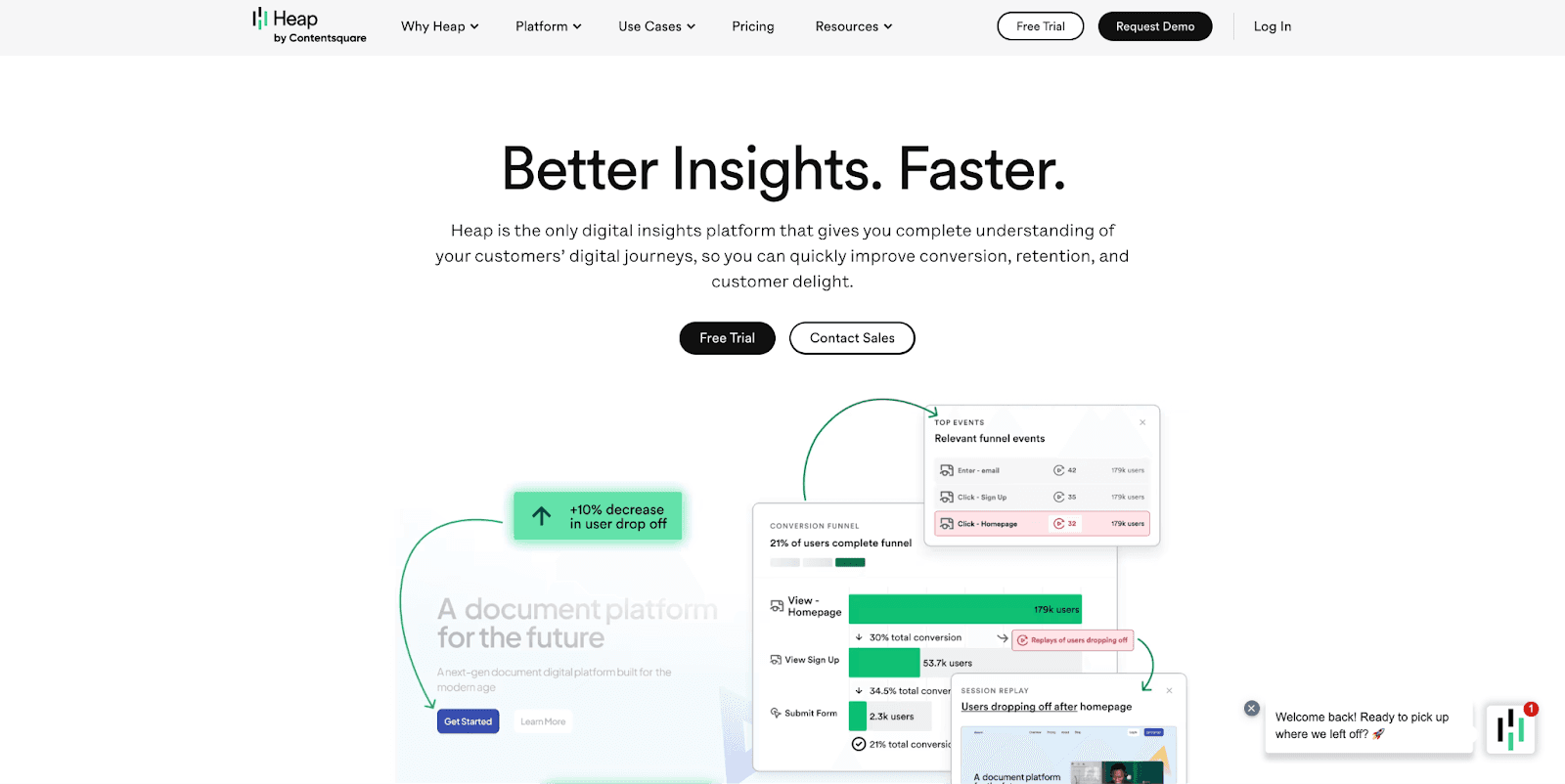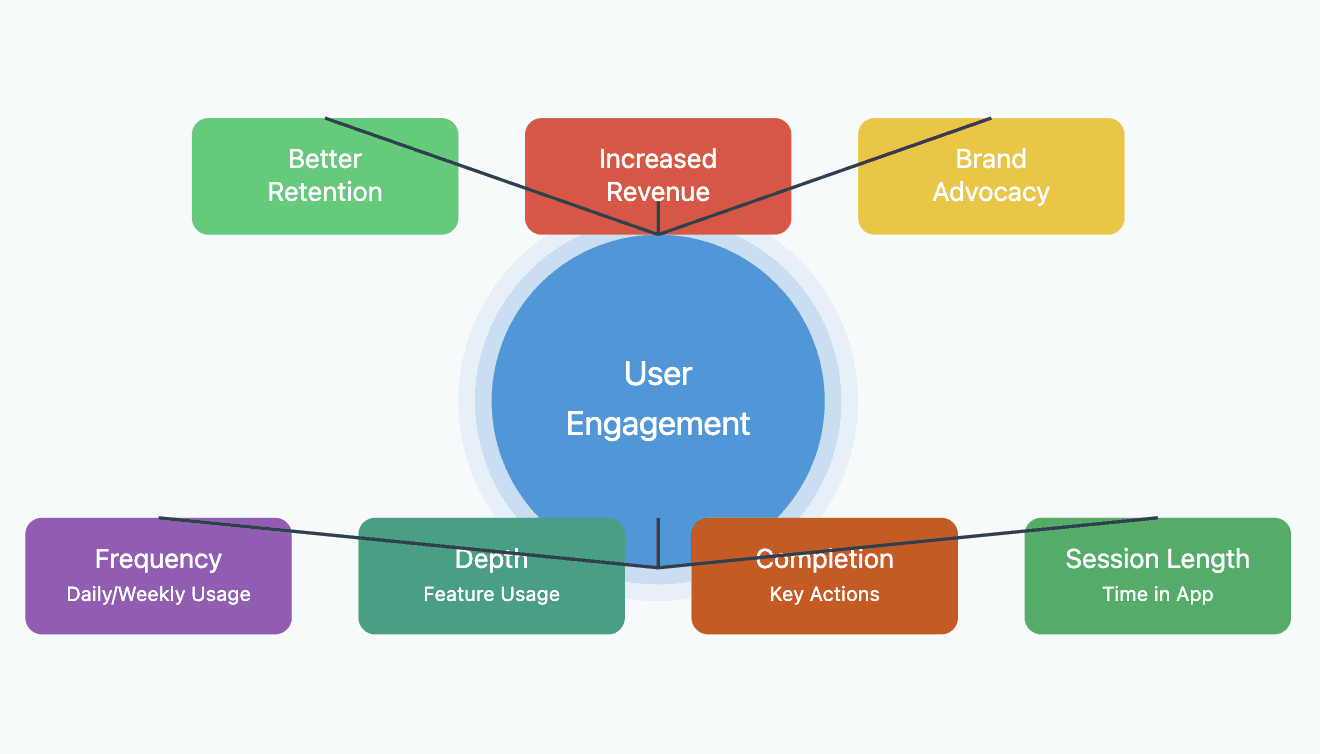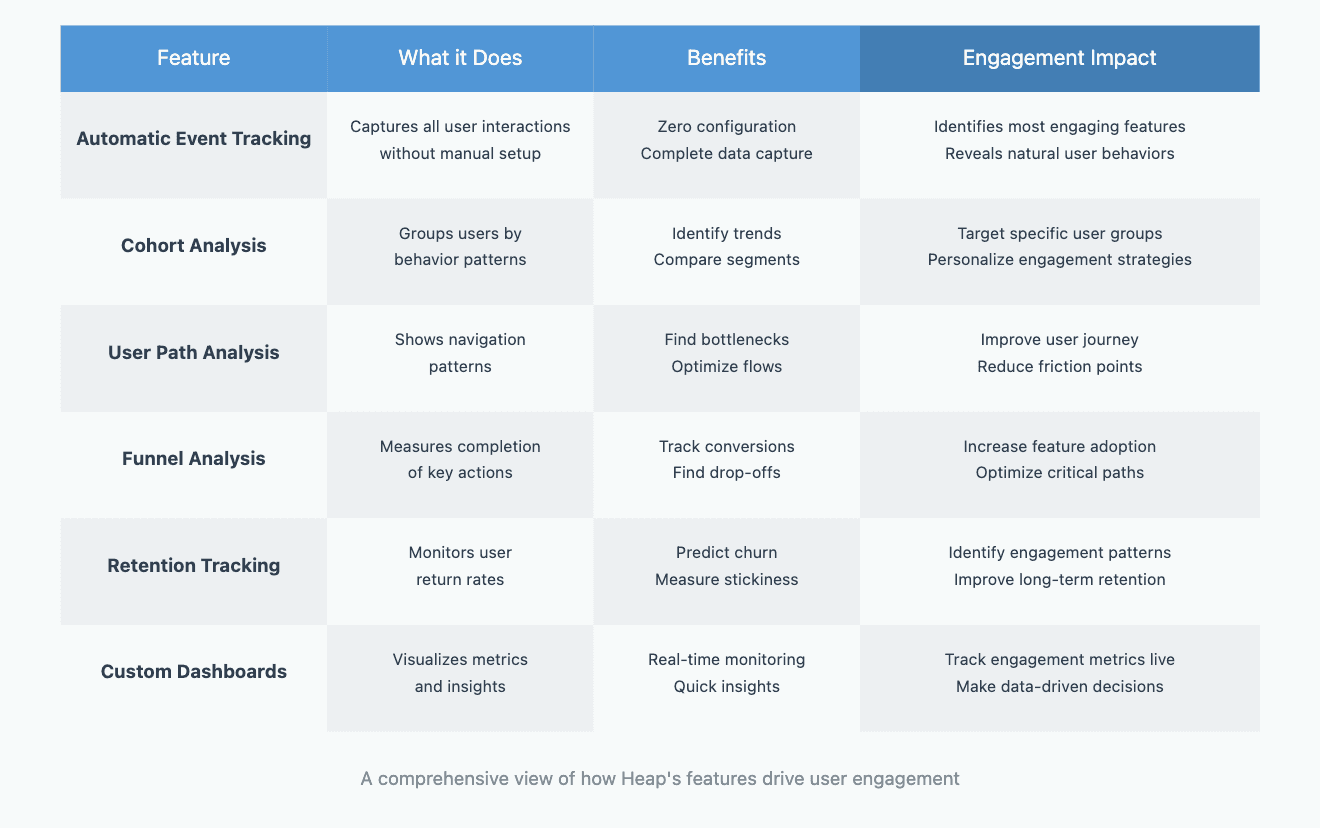
Heap’s Guide to Measuring SaaS User Engagement

by
Wiktoria Slowikowska
Nov 20, 2024
Identify and convert your most valuable users
Sign Up
User engagement is the backbone of a successful SaaS business. Engaged users find value in your product, explore its features, and are more likely to stick around as loyal customers. But in the competitive SaaS landscape, understanding how to measure and optimize engagement requires more than intuition—it demands actionable data and insights.
Heap’s analytics platform is uniquely designed to simplify the process of measuring user engagement. Its automatic event tracking, advanced segmentation, and retroactive analysis capabilities empower SaaS teams to gain a holistic view of how users interact with their product. By diving deep into these insights, you can optimize your features, refine onboarding, and ultimately drive better user retention.
In this guide, we’ll explore how to use Heap to effectively measure user engagement, define key metrics, and leverage the data to build a more engaging product experience.

What is User Engagement in SaaS?

User engagement is the measure of how actively and frequently users interact with your product. It’s not just about logging in—it’s about meaningful interactions that demonstrate users are deriving value from your offering. High engagement typically leads to:
Better Retention: Engaged users are less likely to churn.
Increased Revenue: Engaged users are more likely to upgrade or renew subscriptions.
Brand Advocacy: Users who find value in your product often recommend it to others.
Key aspects of user engagement include:
Frequency: How often users interact with your product (e.g., daily or weekly).
Depth: The extent of interactions—are users exploring multiple features or just a few?
Completion Rates: Are users finishing key actions, like completing profiles or activating features?
Session Length: How much time users spend in your app during a session.
Why Use Heap for Measuring Engagement?
Heap’s automatic data capture makes it a standout tool for measuring engagement. Unlike traditional analytics platforms that require manual event tracking, Heap captures every interaction by default, allowing you to retroactively analyze user behavior without prior setup. This feature is particularly valuable for SaaS companies, where user engagement patterns can vary significantly between onboarding, feature adoption, and long-term use.
Key advantages of Heap for engagement measurement include:
Automatic Event Tracking: Instantly track clicks, form submissions, and other interactions without additional setup.
Cohort Analysis: Group users based on behavior or demographics to understand engagement trends.
User Paths: Visualize how users navigate your product and identify engagement bottlenecks.
Customizable Dashboards: Track key engagement metrics in real-time and stay on top of user behavior.
Setting Up Heap for Measuring Engagement
Step 1: Install Heap
To start, integrate Heap into your SaaS product. Heap’s installation process involves adding a tracking snippet to your app or website, and it supports multiple platforms such as React, JavaScript, and APIs for backend data collection. Once installed, Heap begins capturing user data immediately.
Step 2: Define Engagement Goals
Engagement goals will vary depending on your product’s purpose. For example:
For a project management tool: Tracking how often users create or complete tasks.
For a data visualization platform: Measuring interactions with charts or reports.
Define your product’s unique engagement metrics to focus your analysis on what truly matters.
Key Heap Features for Measuring User Engagement
1. Event Tracking
Heap automatically tracks every user interaction in your app—clicks, scrolls, submissions, and more. This eliminates the need for manual tagging, ensuring no interaction is overlooked.
How to Use It:
Identify key actions that indicate engagement, such as logging in, using specific features, or completing workflows.
Use Heap’s event definitions to create custom events that align with your goals.
Example:
Let’s say you want to measure engagement with a new collaboration feature. Heap will automatically capture every click and interaction with the feature. By defining these interactions as custom events, you can analyze usage trends over time.
2. Funnels for Key Action Completion
Funnels allow you to measure the steps users take to complete a specific action, such as activating a feature or finishing onboarding. Heap’s funnel analysis helps you understand where users drop off and how to address these gaps.
Key Metrics to Monitor:
Drop-off rates: Where users stop engaging in the process.
Conversion rates: The percentage of users who complete the desired action.
Example:
Track the onboarding process by setting up a funnel for steps like signing up, adding team members, and using the product for the first time. If drop-off occurs during a particular step, you can investigate and improve that part of the experience.
3. Cohort Analysis
Cohorts group users based on shared characteristics or behaviors, such as their signup date, feature usage, or geographic location. Heap’s cohort analysis lets you see how engagement evolves for different groups over time.
How to Use It:
Compare engagement rates for users who signed up during different campaigns.
Analyze retention for cohorts that adopted a specific feature early versus later.
Example:
You may discover that users who complete onboarding within a week are far more engaged than those who take longer. Use this insight to refine your onboarding experience and incentivize faster completion.
4. Retention Tracking
Retention is one of the most reliable indicators of engagement. Heap allows you to track retention rates based on user cohorts, showing how often users return to your product after their first interaction.
Tips for Retention Analysis:
Look for patterns among retained users, such as high feature usage or specific workflows.
Identify where churn occurs and use Heap’s event data to pinpoint potential causes.
Example:
If users who engage with your reporting feature within the first month have higher retention, prioritize showcasing this feature during onboarding.
5. User Paths and Journeys
Heap’s user path analysis visualizes how users navigate through your product. This helps identify common paths, bottlenecks, and areas where users drop off.
How to Use It:
Understand which features users naturally gravitate toward after onboarding.
Spot disengagement points, like users skipping over valuable features.
Example:
You might find that users frequently access one feature but fail to move on to complementary features. Use this data to guide users more effectively.
Using Insights to Optimize Engagement
Once you’ve measured engagement, it’s time to act. Here’s how to leverage Heap’s insights:
Refine Onboarding: Simplify steps where users drop off and highlight key features early.
Promote Underused Features: Use Heap’s event data to identify features that add value but are overlooked. Launch campaigns to increase visibility.
Improve UX: Analyze user paths to identify areas where users face friction and make design improvements.
Segment for Personalization: Tailor experiences based on user cohorts. For example, power users may appreciate advanced features, while new users need simplicity.
Building Custom Dashboards for Engagement
Heap’s dashboards keep your engagement metrics front and center. Use them to:
Monitor real-time trends in DAUs, MAUs, or feature usage.
Track retention rates and user churn.
Visualize funnels and drop-off rates for critical workflows.
By centralizing your data in custom dashboards, you can ensure your team stays informed and makes timely, data-driven decisions.
Features & Engagement Impact
Below you can see how Heap's key analytics features drive user engagement. Each row shows what the feature does, its core benefits, and its direct impact on improving user interaction with your product. This breakdown helps understand how Heap's tools work together to measure and enhance engagement.

Conclusion
Measuring user engagement is critical for SaaS growth, and Heap offers the tools to do it with precision and ease. By leveraging Heap’s automatic event tracking, funnel analysis, cohort insights, and retention tracking, you can gain a deep understanding of how users interact with your product.
Armed with these insights, you can optimize your product to deliver greater value, improve retention, and ultimately drive long-term success. Dive into Heap today and start transforming your user engagement strategy.





